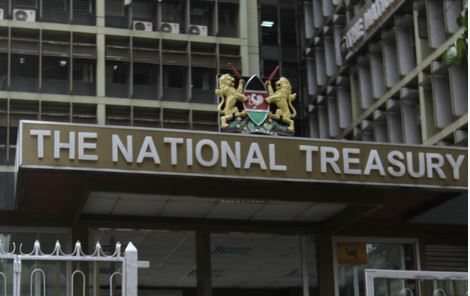
Kenya borrowed Sh27.4 billion in December last year, pushing the country’s public debt to Sh7.3 trillion.
The latest data from the Central Bank of Kenya (CBK) shows that in six months, the Treasury borrowed Sh688.2 billion against a projected Budget hole of around Sh1 trillion for the financial year that ends in June 2021.
Should tax collection continue to underperform, then the Treasury will have to borrow at least Sh311.2 billion between January and June.
But the Treasury has insisted that tax collection has started to pick up following the partial re-opening of the economy.
Increased economic activities in December last year saw the Kenya Revenue Authority (KRA) surpass its target for the first time during the Covid-19 pandemic, netting more than Sh166 billion in taxes.
External debt stood at Sh3.8 trillion, while domestic debt was at Sh3.5 trillion. The update of the debt information to December 2020 is a big leap forward for Kenya, with the Central Bank, the Treasury’s fiscal agent, now up to date on public debt data.
While there is no clear reason given for the information updates, one of the conditions given for Kenya to receive debt repayment holidays from most of its bilateral creditors under the G20 framework was that it must be transparent and accountable on debt.
The country has since received debt service suspensions from China and 10 Paris Club countries, totalling around Sh60 billion, giving it substantial breathing space.
If all the loans that have been committed to are added up, then the country’s total loans jump to Sh8.4 trillion, just Sh600 billion shy of the Sh9 trillion legal ceiling.
But this debt ceiling could be crashed should the Treasury include non-guaranteed loans and county loans in the computation of public debt.
Between October and November 2020, the Treasury borrowed an additional Sh133 billion. A big chunk of this was external debt, which saw the stock of foreign loans rise by Sh108.3 billion between September and November.
The government has been borrowing more to fill a yawning Budget hole left by dwindling tax revenues.
China also holds a sizeable chunk of the country’s foreign loans, having advanced to Kenya about Sh736 billion to build roads, railways, ports and other infrastructure.
Domestic loans, largely from banks, pension funds and insurance companies, stand at Sh3.5 trillion.
The government has projected a Budget deficit of Sh1 trillion in the financial year 2020-21, which will be plugged through net external financing of Sh401.8 billion and net domestic borrowing of Sh600 billion.
Already, the State has borrowed Sh256 billion from external lenders, mostly multilateral institutions including the World Bank, International Monetary Fund and African Development Bank, which have advanced the money to help the country address the adverse effects of the Covid-19 pandemic.
The Treasury still expects a loan of Sh150 billion from the World Bank, and is seeking Sh230 billion from the IMF.
Unless most of the borrowed cash is used to refinance some loans falling due, this new credit will push net external financing beyond the approved Sh401.8 billion.
To remedy this, the Treasury is likely to come up with a mini-budget, asking the National Assembly to push up the limit for external borrowing.
The Exchequer has already received domestic loans of Sh304.8 billion by issuing government papers through CBK.
In its Post Covid-19 Economic Recovery Strategy 2020-22, the Treasury noted that as of August last year, the stock of public debt stood at Sh7.06 trillion, 69.2 per cent of GDP.
“The accumulation of public and public-guaranteed debt and the challenges of servicing it is now recognised as a major constraint to rapid growth in the country,” said the Treasury.
In the financial year ending June 2021, the Treasury will pay Sh904.7 billion to both domestic and external creditors. This is almost half of the revenue, leaving it with little to spend on vital services, such as healthcare.




No comments :
Post a Comment